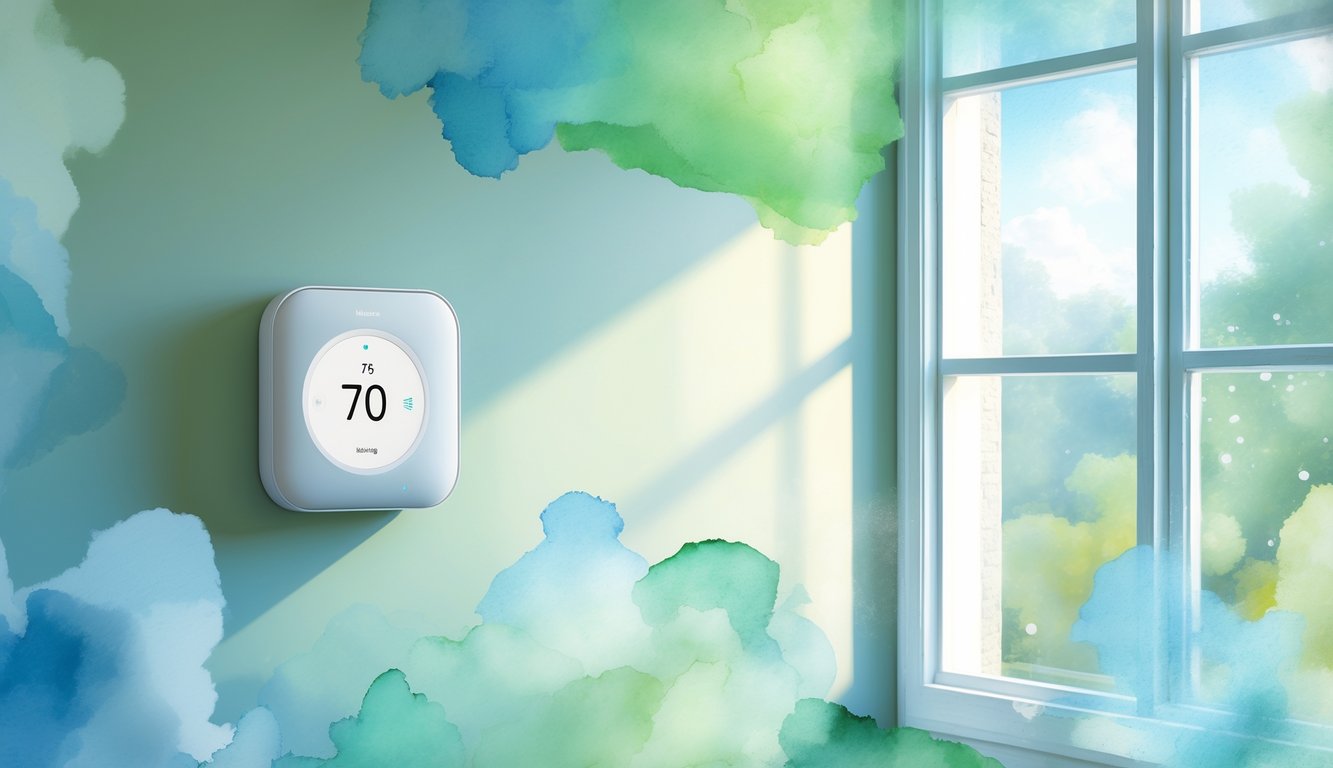
Key Features That Maximize Comfort and Savings
Switching from a manual thermostat to a smart one—yeah, my AC bill noticed. Nobody at the hardware store tells you, but these things do way more than just “turn on and off.” It’s all routines, hidden tweaks, settings buried in menus, and somehow I stopped dreading the midday heat.
Geofencing and Occupancy Detection
I thought geofencing was some sci-fi fence for pets. Nope. It’s just my phone telling the thermostat I left the house. When it works (Ecobee nailed it, the cheap knockoffs didn’t—sorry), the HVAC pauses or adjusts as soon as I cross a set boundary. Forget my phone at home? House thinks I never left. Oops.
Occupancy sensors in some models (Nest is famous, but Honeywell’s TH8321WF1001 with real motion sensors is better if you have pets) save more in busy houses. Once I got over the feeling of being watched, I stopped caring—my bill just kept dropping. ENERGY STAR says you can save 8-10% (2021 NRDC study), but only if you put sensors in rooms people actually use, not just the hallway.
Remote Access and Smartphone Apps
“Smart” mostly means remote control, right? Except, if you’ve ever tried to use six different apps, you know how bad some of them are. My Sensi app froze right as I tried to crank the AC from work. Still, being able to adjust temps from the car or kill the system during a vacation panic is huge. Apple Home, Google Home, whatever—way more control than those old programmable units. I can tweak schedules for my weird life (endless soccer practice, last-minute dinners) and the house is always bearable when I get home. Why don’t they have a “surprise guests” mode? No idea.
Voice Control and Virtual Assistant Integration
Here’s my nitpick: voice control doesn’t always get me. “Make it colder”—sometimes it just ignores me. But full integration with Alexa, Google Assistant, Siri—it’s standard now. I yell at my Nest Hub while cooking, and sometimes it listens, sometimes not. My parents think it’s magic—“Alexa, set living room to 72”—but I mostly use it so I don’t have to put down my textbook. Sometimes someone shouts during a movie and suddenly the living room is a sauna. Still, hands-free control is awesome when you’re carrying groceries or, yeah, covered in flour.
The Role of Automation in Cutting Cooling Bills

There’s always that one person who swears by new windows for summer bills. Meanwhile, my programmable thermostat gets ignored and just keeps saving me money. Real savings feel almost accidental—settings run themselves, and I’m not obsessively tracking kilowatt hours after dinner.
Personalized Schedules
I catch myself freezing, then roasting, all because I forgot to adjust the old thermostat. My smart thermostat (I use Nest, but Ecobee fans are intense) doesn’t wait for me. Every day, it adapts—6:30am, it nudges to 76°F before I’m even awake, because apparently that’s “comfortable.” EPA numbers say these little tweaks cut cooling costs by 15–23% compared to manual setups. That’s actual U.S. government data from 2024. When I bail on plans and end up home all weekend, geofencing means the AC chills out when I leave, then wakes up before I’m back. Automation isn’t flashy, and programming heating and cooling used to make me want blackout curtains instead.
Downloading someone else’s “energy-saving” schedule? Drove me nuts. But now my own weird temperature preferences are just more data for the thermostat to learn. I can outsmart my own forgetfulness—without feeling guilty about window seals or overpriced window film.
Energy Usage Reports and Insights
So, every month, my phone lights up with these so-called energy reports—those graphs that look suspiciously like my failed attempts at a fitness tracker. Giant green arrows, lots of exclamation points: “20% less energy than last year!” Sure, maybe, but I’m not exactly celebrating. Then, two months later, I notice the bill actually dropped. Huh.
The “Usage Insights” thing is the only part I actually pay attention to. They’re weirdly specific, like, “Drop your temp by one degree at 3pm Wednesdays and you’ll save $30 this July.” Who figures this stuff out? The dashboard even tells me when the AC is working hardest, which—wait—lines up with those dramatic news stories about the grid melting down. MSNBC went on about smart home automation last summer as the answer to all our problems. Maybe it’s not total nonsense.
But then sometimes the app accuses me of leaving the back door open, which, I mean, I live on the third floor. Google, come on. At least seeing my energy usage spelled out makes it less of a black box. Like, when I forget laundry and run the dryer at midnight, the report totally calls me out. Programmable thermostat settings don’t feel so pointless anymore—I don’t need to install spaceship windows or call a handyman just to see a little progress.